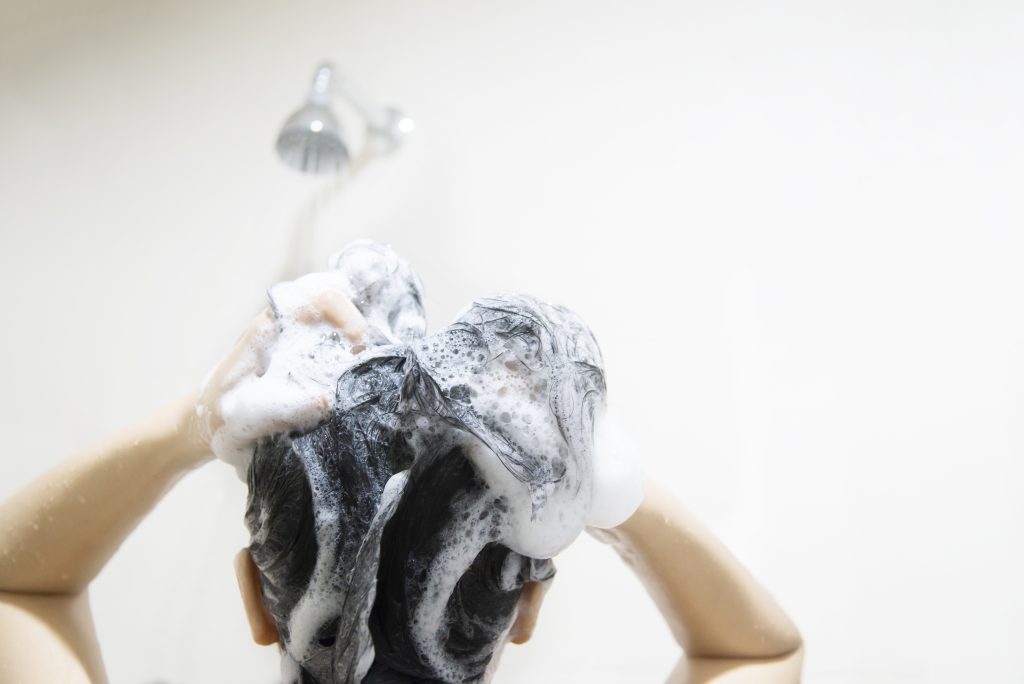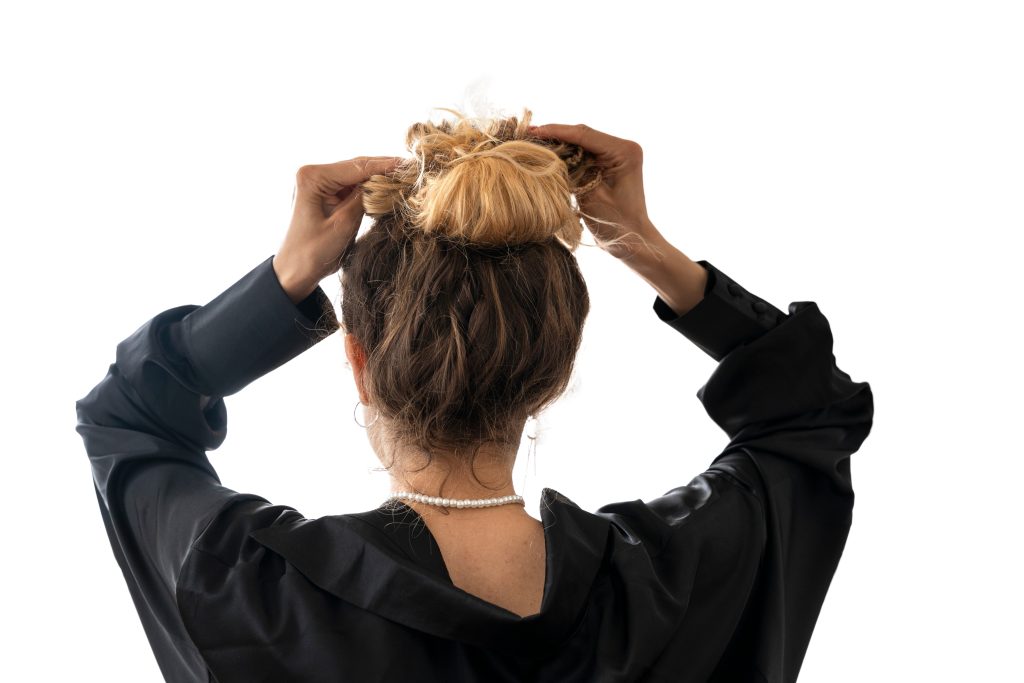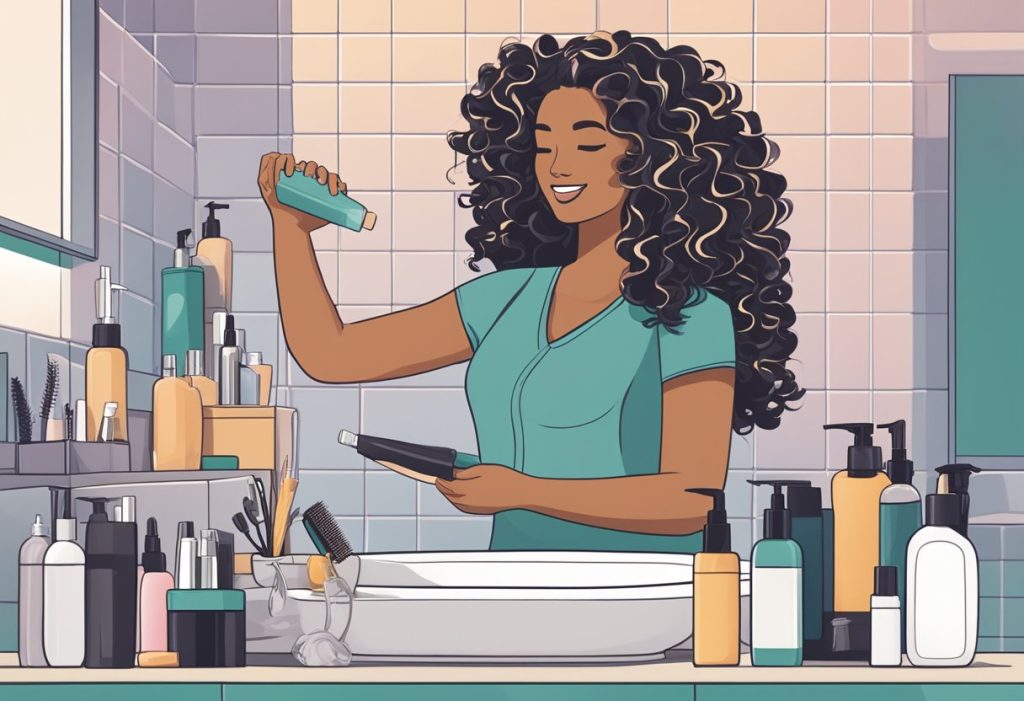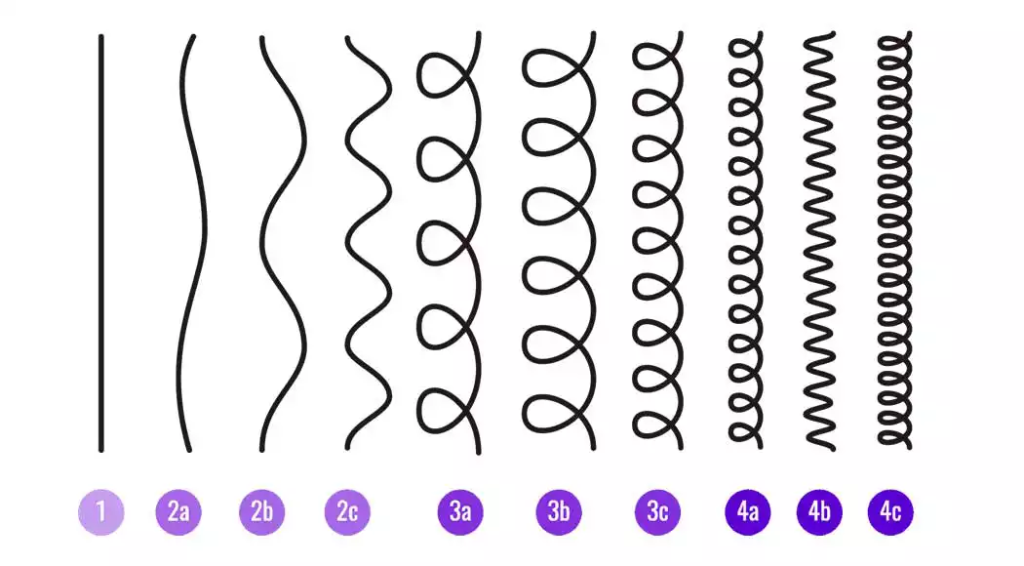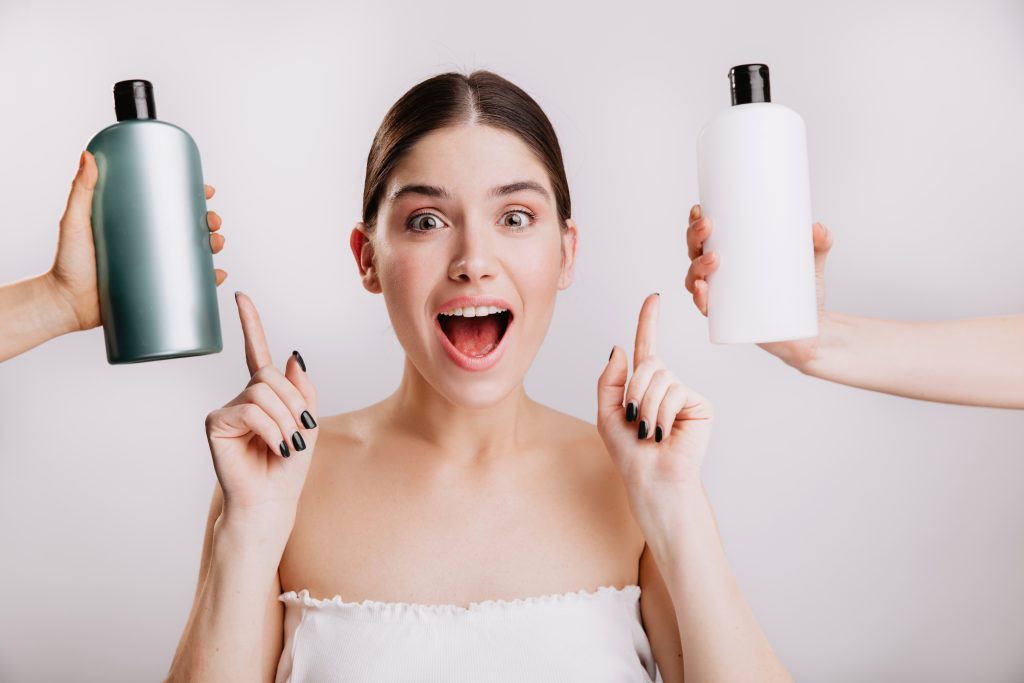
You have wavy hair but love the look of straight hair?
Straightening your hair too often can lead to breakage, split ends, and dryness. However, with the right techniques and products,you can do it more safe, and I’ll tell you how often.
The frequency with which you can straighten your hair depends on a variety of factors, including your hair’s texture, thickness, and overall health. Generally, it’s best to avoid straightening your hair more than two or three times a week to prevent damage. However, if you have particularly healthy hair and use high-quality heat protectants, you may be able to straighten it more often.
To keep your wavy hair healthy and damage-free, it’s important to use the right tools and techniques when straightening. Using a high-quality flat iron with adjustable heat settings can help you avoid overheating your hair. Additionally, using a heat protectant spray or serum can help protect your hair from damage caused by heat styling.

Understanding Hair Types
Hair types can vary greatly, from straight to wavy to curly to coily and everything in between. Understanding your hair type is crucial to properly caring for it and avoiding damage.
Wavy hair is a hair type that falls somewhere in between straight and curly. It has a slight wave or curl pattern that can be accentuated or smoothed out with styling techniques. While wavy hair is generally more resilient than curly or coily hair types, it still requires proper care to avoid damage.
One key factor to consider when caring for wavy hair is its natural texture. Wavy hair tends to be more fragile than straight hair, but less prone to breakage than curly or coily hair. This means that it requires gentle handling, but can handle more frequent styling than curlier hair types.
Another important consideration is the health of your hair. If your hair is damaged or dry, it will be more susceptible to breakage and damage from heat styling. It’s important to keep your hair moisturized and nourished with regular deep conditioning treatments and a healthy diet.

The Process of Hair Straightening
Here’s what you need to know about the process of hair straightening:
Choosing the Right Flat Iron
The first step in straightening your hair is choosing the right flat iron. Look for a flat iron with ceramic plates, as they distribute heat more evenly and are less likely to cause damage to your hair. You should also choose a flat iron with adjustable heat settings, so you can choose the right temperature for your hair type.
Preparing Your Hair
Before you straighten your hair, it’s important to prepare it properly. Always apply a heat protectant spray to your hair to help prevent damage from the heat of the flat iron.
Straightening Your Hair
To straighten your hair, start by sectioning it off into small sections. Clamp the flat iron onto one section of hair, close to the roots, and slowly glide it down the length of your hair. Repeat this process on each section of hair, working from the bottom layers to the top layers.

How Often Can You Straighten Your Hair
To avoid damaging your hair, it’s best to limit how often you straighten it. For wavy hair that is in relatively good health, you shouldn’t straighten your hair more than one to two times a week using a flat iron. However, this number may need to be adjusted based on the width and health of your strands.
In conclusion, hair straightening can be a great way to change up your look, but it’s important to do it properly to avoid causing damage to your hair. By choosing the right flat iron, preparing your hair properly, and limiting how often you straighten it, you can achieve a sleek, straight look without damaging your locks.

Potential Damages from Hair Straightening
Straightening wavy hair can give you a sleek and polished look, but the process can also cause damage to your hair. Here are some of the potential damages that you may encounter from hair straightening:
Heat Damage
Using heat to straighten your hair can cause heat damage, which can result in dry, brittle, and frizzy hair. The high temperature of the flat iron can cause the hair cuticle to open up, leading to moisture loss and breakage. To minimize heat damage, make sure to use a heat protectant spray before straightening your hair and avoid using the flat iron on wet hair.
Breakage
Hair straightening can also cause breakage, which is the result of weakened hair strands. The heat from the flat iron can cause the hair to become dry and brittle, leading to breakage. To prevent breakage, make sure to use a high-quality flat iron that has ceramic plates, which can help distribute heat evenly and minimize damage.
Split Ends
Split ends are another potential damage that can occur from hair straightening. Split ends occur when the hair shaft becomes damaged and splits into two or more parts. This can happen due to heat damage or chemical damage. To prevent split ends, make sure to use a deep conditioner regularly and avoid using a flat iron on wet hair.
To minimize damage, make sure to use high-quality products, follow the instructions carefully, and avoid over-straightening your hair. You should also consider how often you straighten your hair, as overuse can lead to loosing wavy pattern and other damages.
Heat Protection and Hair Care
To keep your wavy hair healthy and damage-free, it’s essential to take proper care of your hair. Heat protectants are a must-have product in your hair care routine, especially if you use heat styling tools regularly. Look for a heat protectant that offers up to 450-degree heat protection. Apply it on damp hair before blow-drying or straightening to protect your hair from heat damage.
In addition to using heat protectants, you should also pay attention to your hair care routine. Use a sulfate-free shampoos and conditioners. Avoid washing your hair too frequently, as it can strip your hair of its natural oils, leading to dryness and damage.
When towel-drying your hair, use a microfiber towel or a t-shirt instead of a regular towel. These materials are gentler on your hair and help prevent tangles and breakage.
When brushing your hair, start from the ends and work your way up to the roots to avoid pulling or damaging your hair. Use a wide-tooth comb or a detangling brush to minimize tension and prevent breakage. Also avoid brushing wet hair.
If you prefer air-drying your hair, apply a leave-in conditioner to your damp hair to add moisture and shine. Avoid using elastic bands or clips that can cause tension and breakage. Instead, use duckbill clips to secure your hair without pulling or damaging it.
Finally, consider getting regular haircuts to remove split ends and maintain the health of your hair. Consult with a dermatologist or a hair care professional to determine the best hair care routine and products for your hair type and needs.

Frequently Asked Questions
What are the different types of hair straightening methods available?
There are several hair straightening methods available, such as chemical straightening, keratin treatment, and heat styling. Chemical straightening involves the use of chemicals to break down the natural bonds in your hair, while keratin treatment involves the use of a protein to smooth out your hair. Heat styling involves the use of a flat iron or blow dryer to straighten your hair temporarily.
How frequently can you use heat on your hair without causing damage?
It is generally recommended to limit heat styling to once or twice a week to avoid damaging your hair. However, the frequency of heat styling can depend on your hair type, the condition of your hair, and the heat setting of your styling tool. It is important to use a heat protectant spray before heat styling to minimize damage.
How long does straightened hair last?
The duration of straightened hair can vary depending on the method used and the condition of your hair, as well as the weather. Chemical straightening can last up to six months, while keratin treatment can last up to three months. Heat styling can last until the next wash or until you expose your hair to humidity or moisture.
Is it bad to straighten your hair every day with heat protection?
While heat protection products can minimize damage, it is not recommended to straighten your hair every day. Daily heat styling can cause damage to your hair over time, leading to breakage and split ends. It is important to give your hair a break from heat styling and use alternative styling methods, such as braids or buns.
How can you straighten wavy hair without causing damage?
To straighten wavy hair without causing damage, it is important to use a heat protectant spray and a flat iron with adjustable heat settings. Start with a low heat setting and gradually increase the temperature until you achieve your desired style. Avoid using a flat iron on wet hair and use a round brush to blow dry your hair straight before using a flat iron.
Should you consider permanently straightening your wavy hair?
Permanently straightening your wavy hair can be a drastic step and should be considered carefully. Chemical straightening can permanently alter the structure of your hair, leading to damage and breakage. It is important to consult a professional stylist before considering permanent straightening and to carefully weigh the potential risks and benefits.

Conclusion
In conclusion, the frequency with which you can straighten your wavy hair without causing damage depends on several factors. These include the condition of your hair, the temperature of your straightener, and the use of heat protectants.
It is generally recommended that you do not straighten your hair more than once a week to avoid damaging it. However, if you use a lower temperature setting and a heat protectant, you may be able to straighten your hair more frequently without causing damage.
Remember to always start with clean, dry hair before straightening, and to use a good quality straightener with adjustable temperature settings. This will help you achieve the best results without causing damage to your hair.
Additionally, it is important to take good care of your hair by using a nourishing shampoo and conditioner, and by avoiding excessive heat styling and chemical treatments. By following these tips, you can enjoy straight, sleek hair without sacrificing its health and vitality.
If you liked this post, don’t forget to share your thoughts in the comment section down below!

